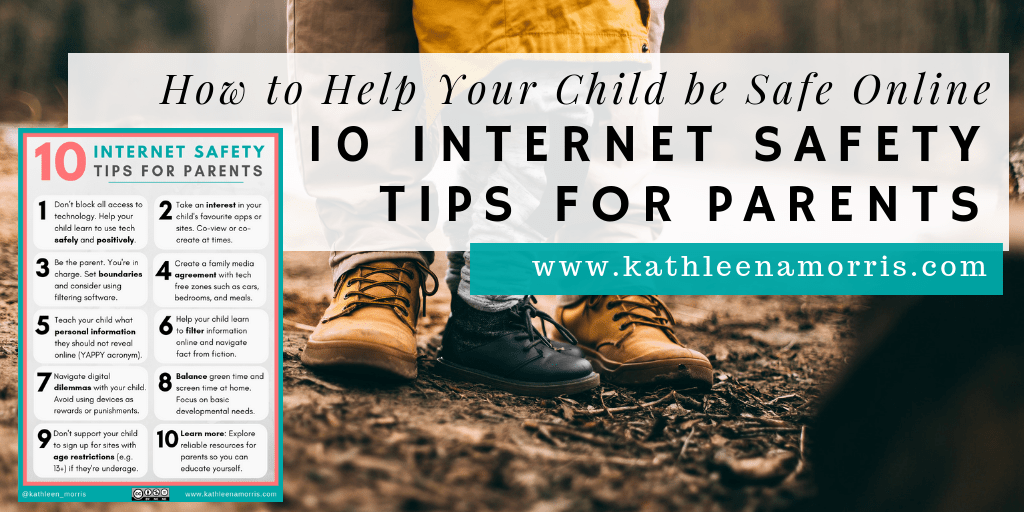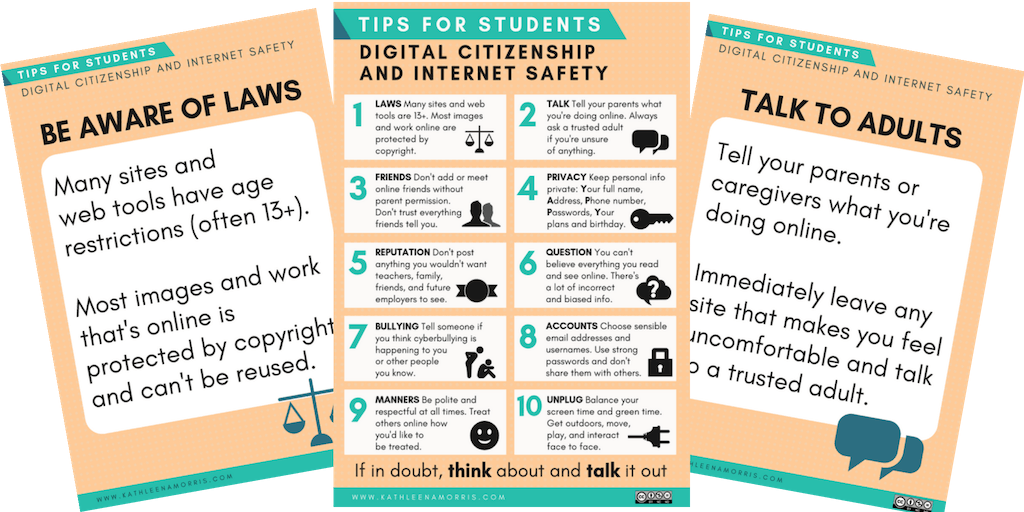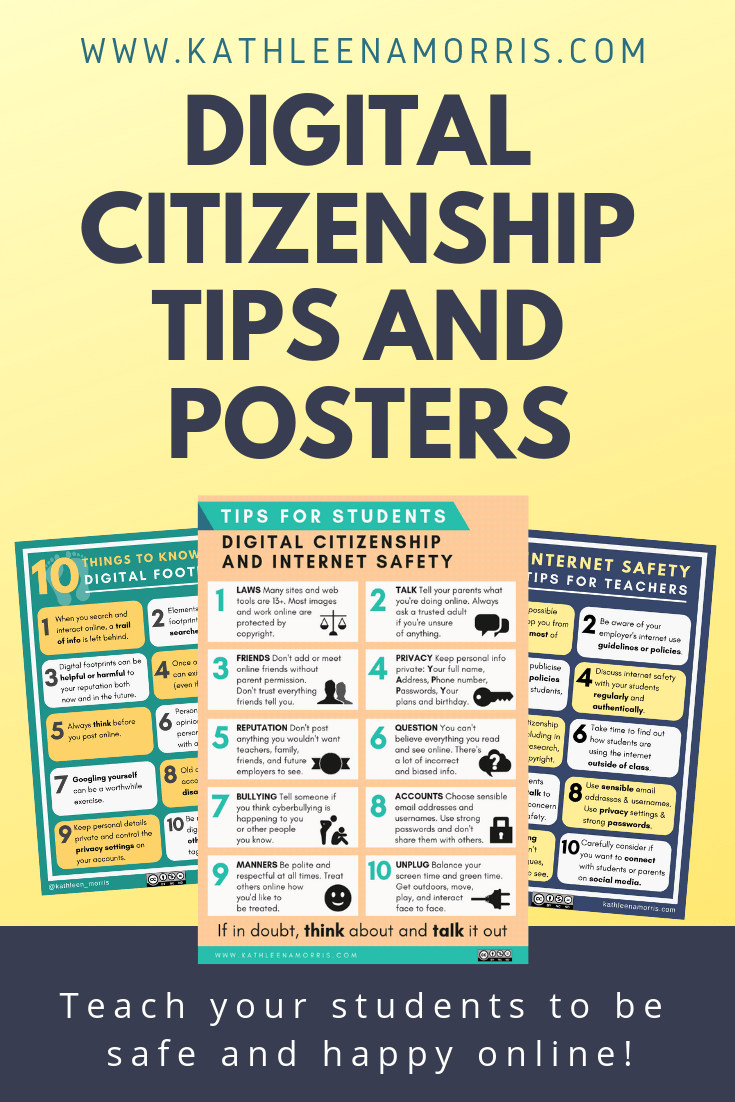Technology is changing the way we live, work, and learn. The lines between our online and offline worlds continue to merge and blur.
This is exciting, however, as our world becomes increasingly digital, our challenges, rights, and responsibilities are changing too.
Teaching students, schools, and families about digital citizenship and internet safety is more important than ever.
What Is Digital Citizenship?
ISTE tells us that, “digital citizens are learners who use their technology-driven powers conscientiously — and with empathy — to help make the world a better place.”
Common Sense Education describes digital citizenship simply as, “the responsible use of technology to learn, create, and participate”.
Digital citizenship is basically an umbrella term covering all sorts of things like: internet safety and security, digital footprints, etiquette, copyright, cyberbullying, health and wellness, and more.
Digital Citizenship Posts And Resources
To find out more about the best approach to teaching digital citizenship, check out Teaching Digital Citizenship: 10 Internet Safety Tips For Students (With Posters).
Involving parents in digital citizenship education is very important. Take a look at 10 Internet Safety Tips for Parents for advice and a poster. 



[…] blog is a public forum- think copywrite, think online safety and thinkparent blogging consent. Although the general release that parents sign for students on […]
[…] http://primarytech.global2.vic.edu.au/internet-safety/ […]
[…] a link to a website with a ton of great resources for teachers to use. Another useful tab is the Internet Safety one. There are links to posters that educators can use about internet safety, there are also links […]